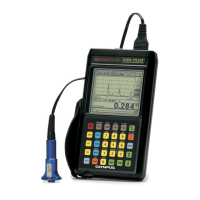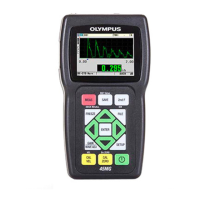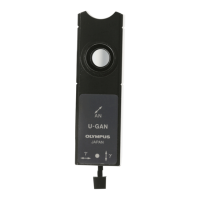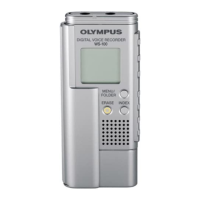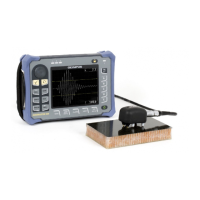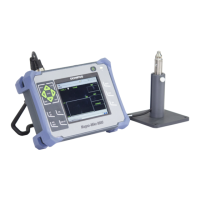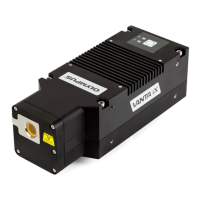DMTA-10004-01EN, Rev. D, November 2016
Custom Setups for Single Element Transducers
235
13.8.1 Detection of Echo 1 and Echo 2
You can select the detection polarity (positive or negative) for the first and second
echoes. Depending on the measurement mode and on the type of test material, the
maximum amplitude in an echo can either be a positive or negative peak. Positive and
negative polarity refer to processed echoes displayed on the waveform display (see
Figure 13-13 on page 235). To measure thicknesses with the highest accuracy, it is
important that the 38DL PLUS detects the maximum amplitude peak in an echo.
Figure 13‑13 Negative and positive echo detection examples
Refer to Table 22 on page 236 to help you decide which detection polarity to select for
a given application.
Negative maximum peak
Negative detection of a steel-air interface Positive detection of a plastic-steel interface
Positive maximum peak

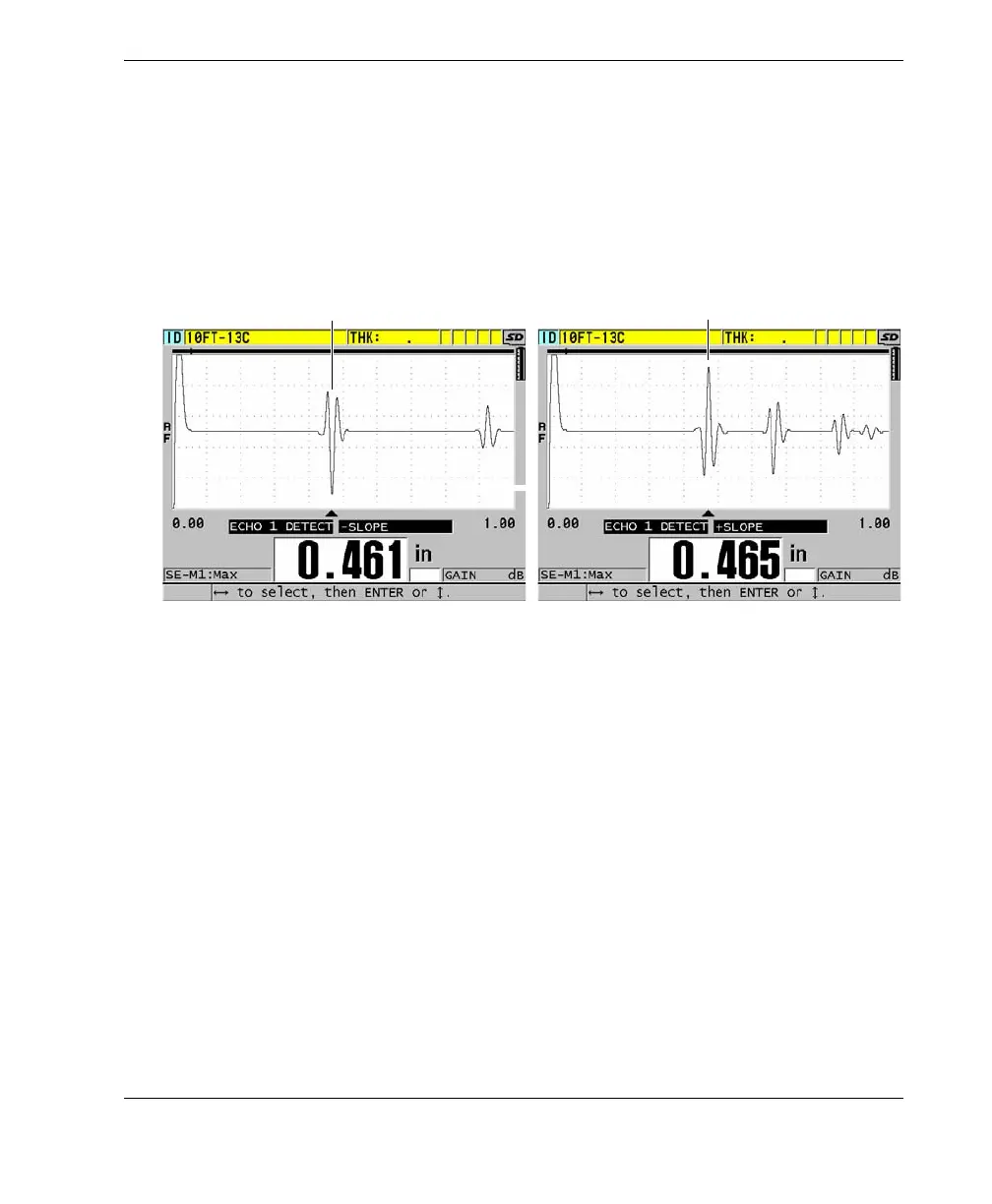